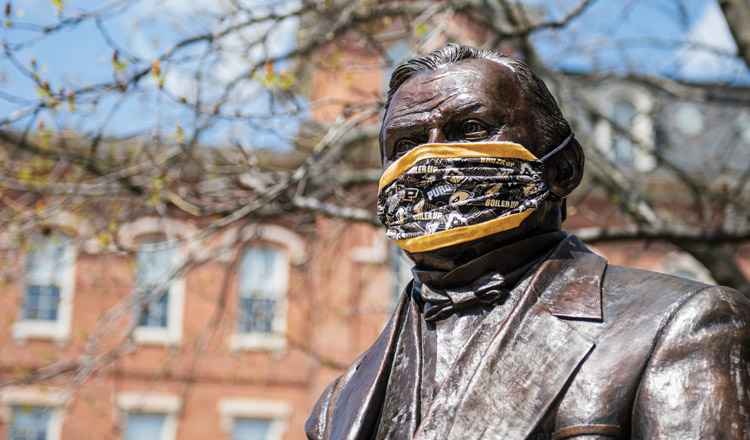
On the Beat
The Purdue Exponent suspended publication only once in its 131-year history — in fall 1918 at the tail end of World War I. When thousands of students left campus in March, stalwart Exponent journalists remained. Editor-in-chief Alisa Reynya, a junior in the College of Liberal Arts and a native of Redmond, Washington, shares a glimpse inside the student-run newsroom during the COVID-19 pandemic.
I feel really lucky that we’ve been able to publish a print edition the past few months even as our advertising revenue has plummeted. But to be honest, it never occurred to me that we wouldn’t continue to report news in one form or another. As more emails came out telling us classes would be online for the rest of the semester, then asking students to leave residence halls, we were left with so many questions. We knew that if we had questions, other people on campus probably did too. Meanwhile, alumni and others outside campus were curious to know what it was like as Purdue transitioned to completely online classes.
The seven editors remaining on campus came in to the office to put out the paper twice a week. Some of our student staff worked remotely. We wrote stories about international students who are stuck on campus for the foreseeable future; students whose internships have been canceled; professors adapting to online learning; a student suing Purdue for a refund for online learning; service staff members’ concerns about safety as they disinfect the University; how area businesses have struggled as students flooded out of West Lafayette; and more.
I think in the back of our minds we all knew we were reporting on things that had never happened at Purdue before. So even though most of our staff didn’t come back to campus after spring break, it felt more important than ever to publish accurate news as quickly as possible. If there’s one thing I’ve learned being a student journalist during a pandemic, it’s that people need reliable local news now more than ever. We don’t yet know what the college or media landscape will look like in the fall, but I know we’ll continue working as we struggle through this collective uncertainty we’ve all been thrown into.

